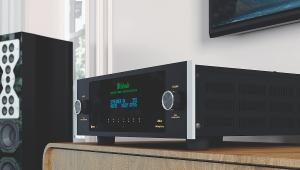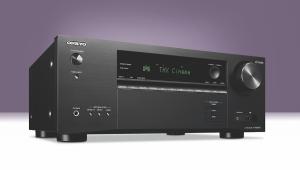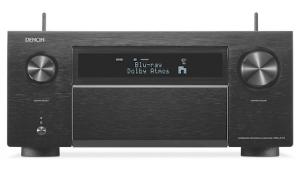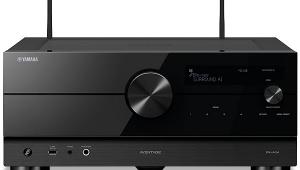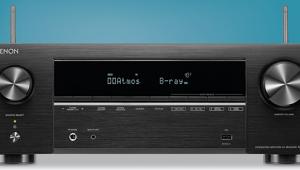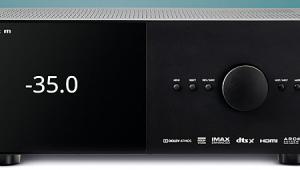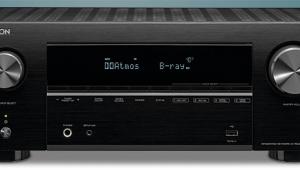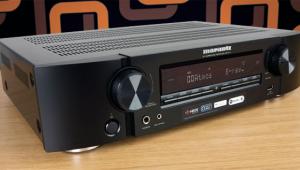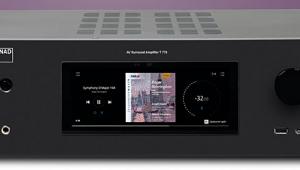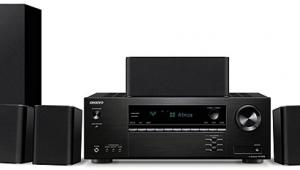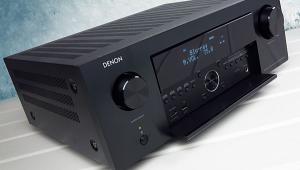Yamaha RX-A2040 review
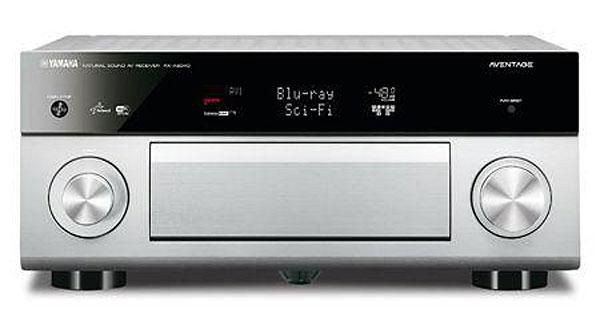
 It’s easy to forget that Yamaha effectively invented the home cinema receiver market. When screens were square and multichannel audio was young and frisky, it pioneered with monster AV receivers that became things of legend. Back then, DSP was Definitely Something Profound, and Yamaha wrote the rulebook on soundfield design.
It’s easy to forget that Yamaha effectively invented the home cinema receiver market. When screens were square and multichannel audio was young and frisky, it pioneered with monster AV receivers that became things of legend. Back then, DSP was Definitely Something Profound, and Yamaha wrote the rulebook on soundfield design.
Today legends are not so easily made. But that pedigree clearly lives on in the brand’s Aventage line of upmarket noise-makers. The RX-A2040 sits somewhere near the top of this integrated lineup, its distinctive design standing out from the dour AVR mainstream.
Not that the Aventage range is distinguished purely by cosmetics. Yamaha invests top-line AV tech into these models, from a premium grade H-chassis design to a raft of painstakingly picked components.
As befits its premium positioning, build quality is excellent. The aluminium front panel ostensibly minimises noise and interference but in reality just looks lovely, while beneath the hood Yamaha has employed an anti-resonance frame with a rigid bottom to minimize vibration. Left and right channels are physically and electrically isolated, to improve channel separation. The undercarriage sports the Yamaha ART (Anti Resonance Technology) Wedge – a fifth central foot for improved stability.
Connectivity comprises the usual forest of HDMI and legacy connections. There are seven rear HDMI inputs, plus one front-facing with MHL support. You also get dual HDMI outputs. While most users would probably employ these for a screen and projector pairing in a dedicated room, there is provision for HDMI zone switching. Indeed, the RX-A2040 is well-suited to multiroom playback.
This is a nine-channel design that can be run in a variety of configurations, typically 5.1.4 or 7.1.2 if you’re adopting Dolby Atmos, but also multizone if you want to utilise the extra amplification for stereo duties in one or two other locations. I opted for a seven-channel surround configuration with two Atmos-enabled heights. Be aware that this model will not be able to support DTS:X when it arrives.
Streaming supportThe receiver can be taken online via integrated Wi-Fi (there are pop-up aerials on the back) or wired Ethernet connection. Once networked, you can take advantage of subscription streaming services Napster and JUKE. Spotify Connect allows you to stream whatever you’re listening to from your mobile. The receiver is also Apple AirPlay compliant.
The AVR will browse connected NAS and DLNA sources relatively quickly. File compatibility is fine, as long as your music collection isn’t DSD (not supported either on USB or across a network, only via HDMI). MP3, FLAC, 24-bit/192kHz WAV and Apple Lossless are all handled, though. Gapless playback keeps things seamless.
Extra embellishments include a Music Enhancer mode for (any) PCM audio source. A high-sampling extension, up to 24-bit/96kHz, this would typically used with CD. It certainly doesn’t impair fidelity, and may even add a frisson of extra air (yes, it’s that subtle).
Setup is aided by a suite of YPAO calibration tools, including RSC (Reflected Sound Control) sound optimisation for 3D soundfields. You can measure for single or multi-position. Yamaha’s auto calibration software is generally useful, although with two subs in play I felt its decision to deem my speakers ‘Large’ was a tad too literal for my liking. A bit of manual intervention mandated an 80Hz crossover, giving better balance.
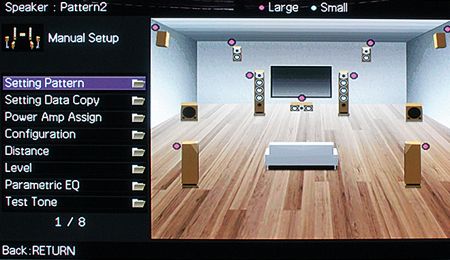
There are no changes here to the UI from last season’s models. The display is colourful but disappointingly low on resolution. This complaint isn’t just aimed at Yamaha. While other home entertainment devices, from next-gen consoles to inexpensive streaming sticks, have the ability to deliver ultra crisp HD text and graphics, AV receivers are mostly unable to muster anything better than SD fuzz. For any device that aspires to be the hub of a modern AV system, the user experience is far too low-res.
Similarly, the remote handset is a horrible button-fest. It’s worth noting, though, that there’s a network interface which offers quick and easy setup configuration.
The rear-facing HDMI board supports 2.0 connectivity, with 4K/Ultra HD 50Hz/60Hz passthrough, as well as 4:4:4, 4:2:2 and 4:2:0 chroma sub-sampling. However, the AVR lacks HDCP 2.2 copy protection, which could have (as yet unexplained) implications for 4K/UHD Blu-ray and set-top box pay services, when they arrive. At worst, this means any HDCP 2.2 protected video will presumably have to be routed direct to a compliant display and not through the AVR.
In flight, the RX-A2040 proves downright entertaining; when an AVR compels you to revisit all your favourite demo pieces you know it’s doing something right.
When Leonardo DiCaprio explains to Ellen Page how to be an architect in Inception (Blu-ray, DTS-HD MA 5.1), the landscape explodes in slow motion. LFE ripples as the soundstage splinters. It’s a sequence I’ve seen many times, but the Yamaha thrills regardless. Dreamworld creation may be insane, but this receiver keeps a foothold in reality.
In episode two of Daredevil (Netflix 5.1), the astonishing Raid-like corridor brawl is painted with sharp, descriptive blows that emphasise the brutality of the sequence. Fittingly you can actually follow the action with your eyes closed. The receiver delivers crunching, realistic blows as DD's fists and feet find their target.
EX/ES post-processing will map a 5.1 audio mix to a full seven-channel surround layout. Generally this work wells, but can seem a little forced. For non-Atmos encoded software, the Surround encoder mode interpolates extra height information to create something akin to a sonic miasma.
The receiver ably demonstrates its audiophile credentials when fed 24-bit/192kHz hi-res audio. Claire Martin’s jazzy reworking of The Man Who Sold The World (Linn Records FLAC Studio Master) plays with almost three-dimensional imaging. MP3s routed through the AVR’s Hi-Res enhancer also have a weight and presence beyond what you might expect. The grinding drum and bass of Momoiro Clover Z’s Lost Child (Noisia), ripped from the clubland of tomorrow’s Neo Tokyo, makes any bitrate banter moot.
Doesn't disappointYamaha's RX-A2040 is a premium AV receiver from a brand bone-deep in home cinema. If you’re looking for scale, immersion and drama, it doesn’t disappoint, and that nine-channel design means that you don’t need to sacrifice a traditional seven-channel surround array just to enjoy a taste of Dolby Atmos. It's also a terrific two-channel performer with plenty of appreciation for the formats and platforms the modern muso enjoys. There are caveats, not least the HDCP 2.2 issue and its stoic DTS:X incompatibility, but those are both future concerns and I still rate this an essential audition.
Specification
Dolby Atmos/TrueHD: Yes
DTS-HD Master Audio: Yes
THX: No
Multichannel input: Yes. 7.1
Multichannel output (claimed): 140W
Multiroom: Yes. 3 zone
AV inputs: 5 x composite (inc front); 6 x digital audio (3 x optical and 3 x coaxial)
HDMI: Yes. 7 x inputs; 2 x outputs (v2.0)
Video upscaling: To 4K
Component video: Yes. 3 x inputs; 1 x output
Dimensions: 435(w) x 192(h) x 467(d)mm
Weight: 17kg
Also featuring: 32 Cinema DSP modes; Scene presets; web interface; YPAO audio calibration; DLNA/USB media playback; Ethernet; Wi-Fi; USB; AirPlay; Spotify Connect; Juke
 |
Home Cinema Choice #351 is on sale now, featuring: Samsung S95D flagship OLED TV; Ascendo loudspeakers; Pioneer VSA-LX805 AV receiver; UST projector roundup; 2024’s summer movies; Conan 4K; and more
|





